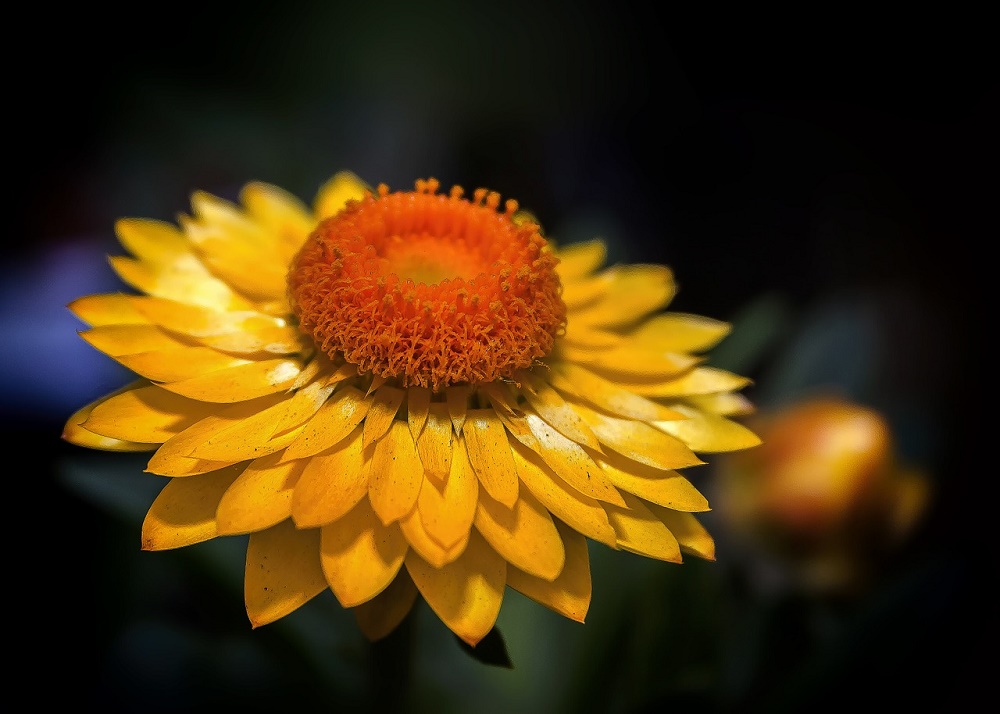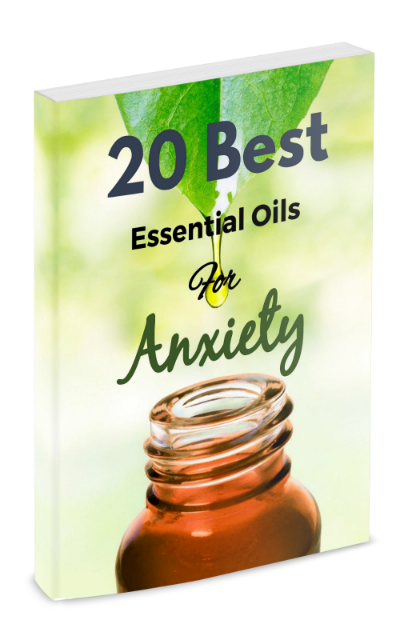Helichrysum oil has an intense, rich scent, reminiscent of honey. The helichrysum plant and essential oil are also known as ‘Imortelle’ and ‘Everlasting‘.
This essential oil helps people who are feeling stressed by promoting a grounding effect. This oil is particularly helpful for those people who have lost contact with the earth and have become to cerebral.

Uses of Helichrysum Oil for the Mind
Most aspects of helichrysum essential oil benefit both the mind and the body. By dealing effectively with many physical ailments, helichrysum oil can help promote a sense of well-being. It can also boost inner strength and courage for the purpose of healing.
Helichrysum Essential Oil Helps Relieve Stress Caused By:
- Past trauma
- Present turmoil
- Feelings of despair or hopelessness
Uses of Helichrysum Oil for the Body
The medical community is researching helichrysum essential oil increasingly for its many beneficial properties. Helichrysum oil has an anti-fungal and antibiotic effect, which is especially evident when applied to the skin. It can benefit rashes, infections, and wounds. Helichrysum oil can also treat acne and sunburned skin due to its moisturizing effects.
Scientists are testing the anti-fungal properties of the essential oil of helichrysum for their effectiveness in combating Candida.
Helichrysum oil lowers blood pressure and reduces inflammation. This can protect the health of the cardiovascular system. Its effects on the digestive system are also beneficial. The oil stimulates the release of gastric juices. It also works as a diuretic by helping to remove excess water.
The essential oil of helichrysum has a good effect on the health of the liver. Its detoxification properties help in treating liver diseases. Scientists have studied helichrysum oil for its ability to reduce the risk of kidney stones.
Helichrysum oil also relieves pain, lowers swelling, and improves circulation.
Helichrysum Oil in Ancient History
Helichrysum plants don’t appear to have left a strong mark on history. However, in all the major regions where the plant grew, the populace knew of the medicinal properties of helichrysum. Using them for medicinal purposes was not uncommon in ancient Greece, or in African countries, especially in the south of Africa.
Helichrysum in Modern History
In modern times, botanists observed that helichrysum plants kept their good looks when dried. In his 1858 book Breck’s Book of Flowers, Joseph Breck wrote the following entry :
“A family of plants much admired on account of the beauty of their flowers, when dried; which, if gathered when they first open and carefully dried, retain their color and shape for many years. They are, therefore, highly prized for winter mantel bouquets, and ornaments for vases.”
However, the plants’ pretty appearance was not the only point of interest for some botanists. Helichrysum’s medicinal properties greatly interested Karl Wilhelm Ludwig Pappe, a German physician and botanist who lived in the nineteenth century. In his 1857 work Floræ Capensis medicæ Prodromus, he gave account about medicinal properties of several African species of helichrysum:
“Helichrysum nudifolium… …A plant pretty common in the colony, and to be met with even in the vicinity of Cape Town, on Devil’s Mountain. The whole of this plant, here called Caffer-tea, is demulcent, and, in the form of infusion, recommended in catarrh, phthisis, and other pulmonary affections.”
“Helichrysum serpyllifolium…. ….This species also possess demulcent and emollient properties, and to be of service in the various diseases of the chest. It goes by the name of Hottentot’s tea, and grows near the watercourses of the Cape mountains, has a pleasant smell, and is much liked by the coloured people, who infuse it as tea.”
“Helichrysum imbricatum… …Like the two former species, this likewise is recommended as a demulcent in coughs and other pulmonary affections. It is used in the form of tea, and called Duinen-thee.”
Helichrysum plants are native to Africa, Australasia, Eurasia, and Madagascar.
Helichrysum grows as perennial plants and shrubs, reaching up to 35 inches in height. Some species produce flowers which, when cut, retain their fresh look for a long time, hence the name ‘Everlasting’. Commercial harvesters grow other species as ornamental plants.
Steam distillation is the method used to extract helichrysum oil from the plant.
Helichrysum Oil Cautions:
Helichrysum oil is generally safe for use but it does have anticoagulant properties. People taking blood-thinners or who have an increased danger of bleeding should avoid it. Pregnant or nursing women should also avoid using helichrysum essential oil.


